You might expect a building dedicated to demonstrating sustainable technological research and sustainable building solutions to be pretty damn sustainable itself. The Global Change Institute at the University of Queensland, designed by HASSELL, doesn’t fail to deliver.
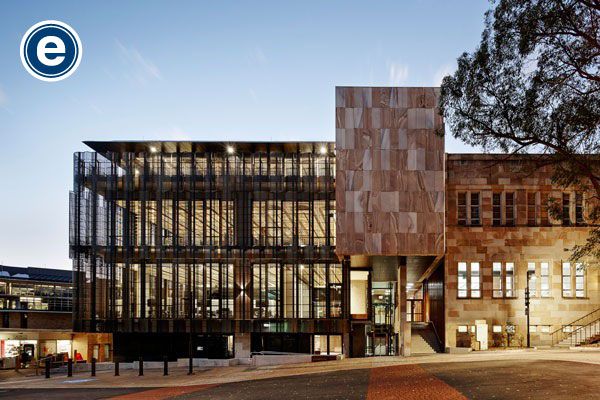
March 17th, 2015
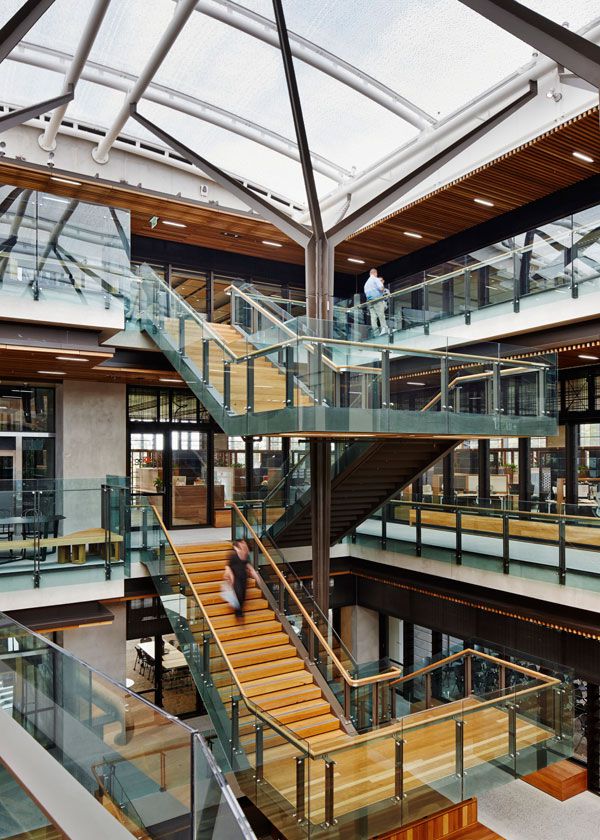
In a country where the eaveless, energy-guzzling McMansion has become the archetype of the built environment, it’s refreshing to find a building that meets the world’s most advanced levels of sustainability. The $32 million Global Change Institute (GCI) designed by Hassell is one of the first buildings to be registered for the Living Building Challenge.
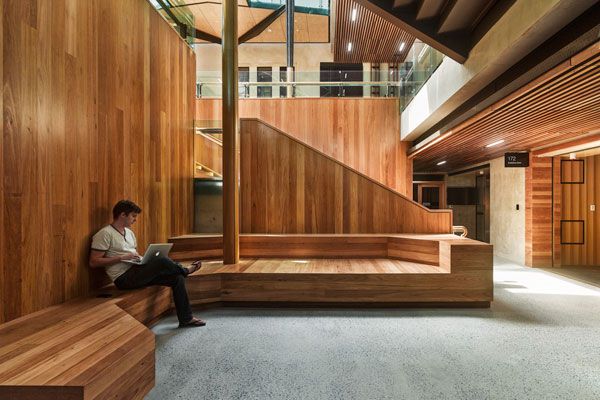
The building has been designed to work with the natural environment and to operate as a zero-energy and carbon neutral workplace. It is naturally ventilated for most of the year and generates and stores all its own power on-site through renewable solar energy sources that are pollution free.
The GCI also represents the first Australian use of structural Geopolymer concrete, a low-carbon product produced with significantly lower greenhouse gas emissions than conventional concrete.
Indeed, the building moves away from a framework of consumption of the world’s resources to one that actively contributes to the restoration and regeneration of the environment. It also acts as a live research site, with the building systems and occupants used to assess optimal comfort conditions in low-energy buildings for the sub-tropics.
An operable sun shading system tracks the sun and protects the glass louvres which encourage natural ventilation. The air flows across occupied spaces to the central atrium which acts as the buildings ‘lungs’, discharging warm air through its thermal chimney. The translucent ETFE atrium roof (similar to that used on the Water Cube at the Beijing Olympics) allows natural light into the interior while insulating from the sun’s heat. Optimal natural lighting is supported by enviro-friendly LED lighting.
Chilled water flushed through the exposed Geopolymer precast floor panels works to keep the building chilled, while rainwater storage of 60,000 litres services the hydronic cooling system, kitchen and showers.
A green wall, bush tucker garden and bio-retention basin breathe life into the building’s green ethos, and the university’s campus pedestrian links provide easy access by foot or bike.
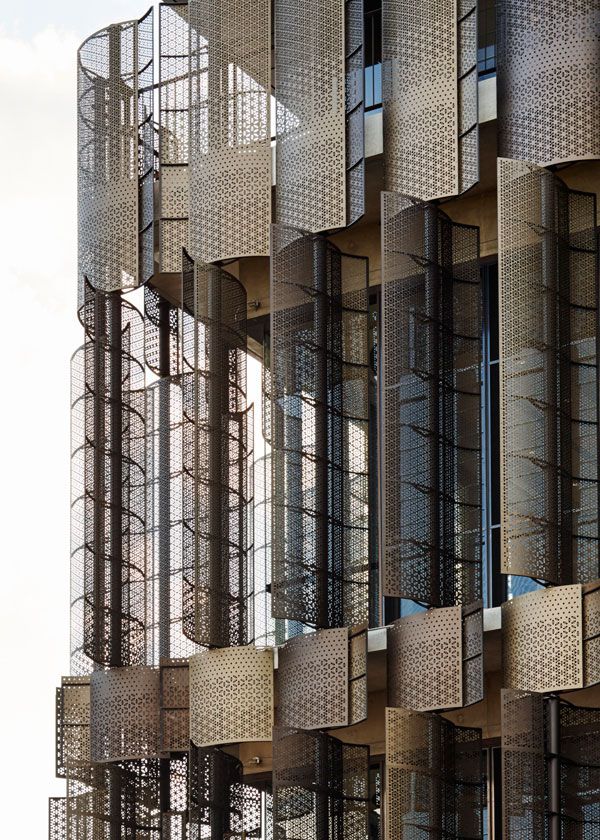
Photography by Peter Bennetts
The GCI has won numerous awards, including the prestigious 2014 BPN Sustainability Awards for Public Building and Urban Design.
Design team:
_ UQ Property and Facilities Division – Project Management
_ HASSELL – Architecture, Interiors & Landscape
_ Arup – Sustainability, Acoustics & Fire
_ Medland Metropolis – Mechanical and Electrical
_ Bligh Tanner – Structure, Civil + Façade
_ SPP Group – Hydraulics
_ Rider Levett Bucknall – Quantity Surveyor
_ Riddel Architecture – Heritage
_ McNab – Builder
_ Umow Lai – Commissioning Agent
HASSELL
hassellstudio.com
INDESIGN is on instagram
Follow @indesignlive
A searchable and comprehensive guide for specifying leading products and their suppliers
Keep up to date with the latest and greatest from our industry BFF's!

The undeniable thread connecting Herman Miller and Knoll’s design legacies across the decades now finds its profound physical embodiment at MillerKnoll’s new Design Yard Archives.

How can design empower the individual in a workplace transforming from a place to an activity? Here, Design Director Joel Sampson reveals how prioritising human needs – including agency, privacy, pause and connection – and leveraging responsive spatial solutions like the Herman Miller Bay Work Pod is key to crafting engaging and radically inclusive hybrid environments.
The new range features slabs with warm, earthy palettes that lend a sense of organic luxury to every space.

Gaggenau’s understated appliance fuses a carefully calibrated aesthetic of deliberate subtraction with an intuitive dynamism of culinary fluidity, unveiling a delightfully unrestricted spectrum of high-performing creativity.
When asked to produce the branding for the Sydney Design 09 program, design studio one8one7 ’flagged’ a potential problem.
Get your ideas out there, get involved and make a real difference.
The internet never sleeps! Here's the stuff you might have missed

At Saltbox in Sydney, this year’s INDE winners – including a Best of the Best from Asia – were announced at an extravagant, fun Gala awards night.
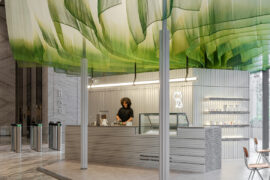
Spacemen Studio foregrounds fabric and colour in a hospitality project inspired by the ritual preparation of matcha.